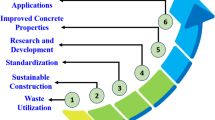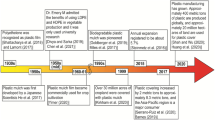Abstract
A number of soils and parent rocks at different stages of weathering were investigated for the formation of heterogeneous wettability under residual hydrophobic contamination in situ. The aim of the study was to determine specific wetting contact angles of soils and parent rocks under different conditions. The wetting contact angle was measured by the captive bubble method, which implied attaching an air bubble to the specially prepared horizontal surface of a water-placed specimen with subsequent measuring the wetting contact angle according to the profile of the bubble’s photo. The soil specimens were artificially hydrophobized using media containing less than 1 wt % of oil degradation products with adapted microflora. Leached chernozem, alluvial silty loam, bentonite, dolomite–clayey marl, ornamental marl, and phyllite were studied. Based on the Pearson’s goodness-of-fit criterion, good angular data approximation by both the von Mises–Tikhonov distribution and the normal distribution was found. The dependence of the types and parameters of statistical distributions of the wetting contact angle on hydrophobization conditions of the specimens was revealed. The formation of the specimens’ hydrophobicity exclusively under introduced organic matter and incomplete water saturation conditions was found; at the same time, a high heterogeneity of wettability and hydrophobic areas at wetting contact angles above 129° was manifested. The results of the study can be useful for assessing and predicting the impact of soil hydrophobic contaminants and amendments, as well as for advancing methods for determining the wetting contact angle on the soil surface.



Similar content being viewed by others
REFERENCES
V. A. Arkhipov, D. Yu. Paleev, Yu. F. Patrakov, and A. S. Usanina, “Wettability of powder materials,” Izv. Vyssh. Uchebn. Zaved., Fiz. 55 (7-2), 20–26 (2012).
A. A. Galeev and O. A. Sofinskaya, RF Patent No. 2744463, Byull. Izobret., No. 7 (2021). https:// www1.fips.ru/ofpstorage/BULLETIN/IZPM/2021/03/ 10/INDEX_RU.HTM. Cited July 1, 2021.
B. V. Deryagin, S. S. Dukhin, and N. N. Rulev, Microflotation: Water Treatment and Enrichment (Khimiya, Moscow, 1986) [in Russian].
L. V. Ivanova, V. N. Koshelev, N. A. Sokova, E. A. Burov, and O. V. Primerova, “Petroleum acids and their derivatives: synthesis and use (overview),” Tr. Ross. Gos. Univ. Nefti Gaza im. I.M. Gubkina, No. 1 (270), 68–80 (2013).
L. Korenkova and M. Urik, “Infiltration variability in agricultural soil aggregates caused by air slaking,” Eurasian Soil Sci. 51, 428–433 (2018).
G. N. Kurochkina, “The effect of humic acid adsorption on the coagulation stability of soil suspensions,” Eurasian Soil Sci. 53, 62–72 (2020).
G. A. Larionov, O. G. Bushueva, A. V. Gorobets, N. G. Dobrovolskaya, Z. P. Kiryukhina, S. F. Krasnov, L. F. Litvin, I. A. Maksimova, and I. I. Sudnitsyn, “Experimental study of factors affecting soil erodibility,” Eurasian Soil Sci. 51, 336–344 (2018).
N. V. Matveeva, E. Yu. Milanovskii, and O. B. Rogova, “The method for preparation of soil samples to determine the contact angle of wetting by the sessile-drop technique,” Byull. Pochv. Inst. im. V.V. Dokuchaeva, No. 97, 91–112 (2019). https://doi.org/10.31453/kdu.ru.91304.0065
K. Mardia, Statistics of Directional Data (Elsevier, Amsterdam, 1972; Fizmatlit, Moscow, 1978.
V. I. Osipov and V. N. Sokolov, Clays and Its Properties: Composition, Structure, and Formation of Properties (GEOS, Moscow, 2013) [in Russian].
M. S. Rozanova, O. I. Mylnikova, O. I. Klein, O. I. Filippova, V. A. Kholodov, E. L. Listov, and N. A. Kulikova, “Assessing the efficiency of humic substances as washing agents for oil–contaminated soils and peats under model experimental conditions,” Eurasian Soil Sci. 51, 1111–1117 (2018).
B. D. Summ and Yu. V. Goryunov, Physical and Chemical Principles of Wetting and Swelling (Khimiya, Moscow, 1976) [in Russian].
R. R. Khasanov and A. A. Galeev, “Evolution of syngenetic organic matter in the Paleozoic sediments of the central part of the Volga-Ural anteclise,” Uch. Zap. Kazan. Gos. Univ. 150, 152–161 (2008).
E. V. Shein, N. V. Verkhovtseva, G. S. Bykova, and E. B. Pashkevich, “Aggregate formation in a kaolinite suspension during microbiological modification of clay surface,” Eurasian Soil Sci. 53, 349–354 (2020). https://doi.org/10.1134/S1064229320030072
Encyclopedia of Statistical Terms (Federal State Statistics Service, Moscow, 2013), Vol. 2.
S. Atherton, D. Polak, C. A. E. Hamlett, N. J.Shirtcliffe, G. McHale, S. Ahn, S. H. Doerr, R. Bryant, and M. I. Newton, “Drop impact behavior on alternately hydrophobic and hydrophilic layered bead packs,” Chem. Eng. Res. Des. 110, 200–208 (2016). https://doi.org/10.1016/j.cherd.2016.02.011
J. Bachmann, M.-O. Goebel, and S. K. Woche, “Small-scale contact angle mapping on undisturbed soil surfaces,” J. Hydrol. Hydromech. 61 (1), 3–8 (2013). https://doi.org/10.2478/johh-2013-0002
J. Bachmann, G. Uggenberger, T. Baumgartl, R. H. Ellerbrock, E. Urbanek, M.-O. Goebel, K. Kaiser, R. Horn, and W. R. Fischer, “Physical carbon-sequestration mechanisms under special consideration of soil wettability,” J. Plant Nutr. Soil Sci. 171, 14–26 (2008). https://doi.org/10.1002/jpln.200700054
J. Bachmann, A. Ellies, and K. H. Hartge, “Development and application of a new sessile drop contact anglemethod to assess soil water repellency,” J. Hydrol. 231–232, 66–75 (2000). https://doi.org/10.1016/S0022-1694(00)00184-0
M. Chen, D. Wu, D. Chen, J. Deng, H. Liu, and J. Jiang, “Experimental investigation on the movement of triple-phase contact line during a droplet impacting on horizontal and inclined surface,” Chem. Eng. Sci. 226, 115864 (2020). https://doi.org/10.1016/j.ces.2020.115864
J. W. Drelich, “Contact angles: from past mistakes to new developments through liquid-solid adhesion measurements,” Adv. Colloid Interface Sci. 267, 1–14 (2019). https://doi.org/10.1016/j.cis.2019.02.002
R. Guo, L. E. Dalton, M. Fan, J. McClure, L. Zeng, D. Crandall, and C. Chen, “The role of the spatial heterogeneity and correlation length of surface wettability on two-phase flow in a CO2-water-rock system,” Adv. Water Resour. 146, 103763 (2020). https://doi.org/10.1016/j.advwatres.2020.103763
G. J. Hirasaki, “Wettability: fundamentals and surface forces,” SPE Form. Eval. 6 (2), 217–226 (1991). https://doi.org/10.2118/17367-PA. https://www.researchgate.net/publication/250091228. Cited July 10, 2021.
X. Huang and I. Gates, “Apparent contact angle around the periphery of a liquid drop on roughened surfaces,” Sci. Rep. 10, 8220 (2020). https://doi.org/10.1038/s41598-020-65122-w
G. McHale, N. J. Shirtcliffe, M. I. Newton, and F. B. Pyatt, “Implications of ideas on superhydrophobicity for water repellent soil,” Hydrol. Proc. 21 (17), 2229–2238 (2007). https://doi.org/10.1002/hyp.6765
T. Nishino, M. Meguro, K. Nakamae, M. Matsushita, and Y. Ueda, “The lowest surface free energy based on –CF3 alignment,” Langmuir 15, 4321–4323 (1999). https://doi.org/10.1021/la981727s
F. Restagno, C. Poulard, C. Cohen, L. Vagharchakian, and L. Léger, “Contact angle and contact angle hysteresis measurements using the capillary bridge technique,” Langmuir 25 (18), 11188–11196 (2009). https://doi.org/10.1021/la901616x
J. Shang, M. Flury, J. B. Harsh, and R. L. Zollars, “Comparison of different methods to measure contact angles of soil colloids,” J. Colloid Interface Sci. 328, 299–307 (2008). https://doi.org/10.1016/j.jcis.2008.09.039
E. V. Shein, N. V. Verkhovtseva, E. Yu. Milanovsky, and A. A. Romanycheva, “Microbiological modification of kaolinite and montmorillonite surface: changes in physical and chemical parameters (model experiment),” Biogeosyst. Tech. 9 (3), 229–234 (2016). https://doi.org/10.13187/bgt.2016.9.229
Y. D. Shikhmurzaev, “Moving contact line in liquid/liquid/solid systems,” J. Fluid Mech. 334, 211 (1997).
Funding
This work was supported by the Russian Foundation for Basic Research, project no. 20-05-00151-a and, in part, a subsidy allocated to Kazan University for the implementation of a state assignment in the field of scientific activity (project no. 075-00216-20-05, part II, section I).
Author information
Authors and Affiliations
Corresponding author
Ethics declarations
The authors declare that they have no conflicts of interest.
Additional information
Translated by V. Klyueva
Rights and permissions
About this article
Cite this article
Sofinskaya, O.A., Kosterin, A.V. & Galeev, A.A. Heterogeneity of Wetting Contact Angle in Hydrophobized Soils and Parent Rocks. Eurasian Soil Sc. 55, 339–347 (2022). https://doi.org/10.1134/S1064229322030139
Received:
Revised:
Accepted:
Published:
Issue Date:
DOI: https://doi.org/10.1134/S1064229322030139




